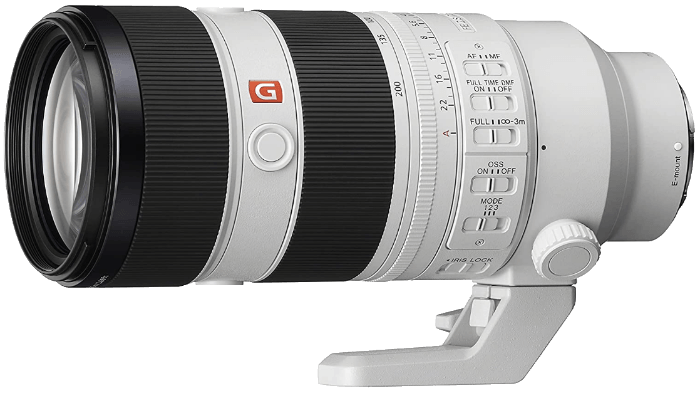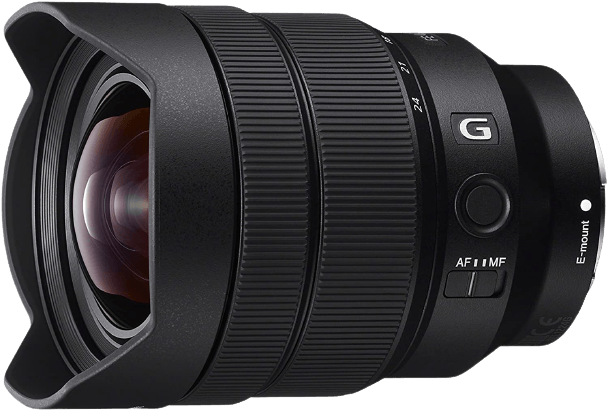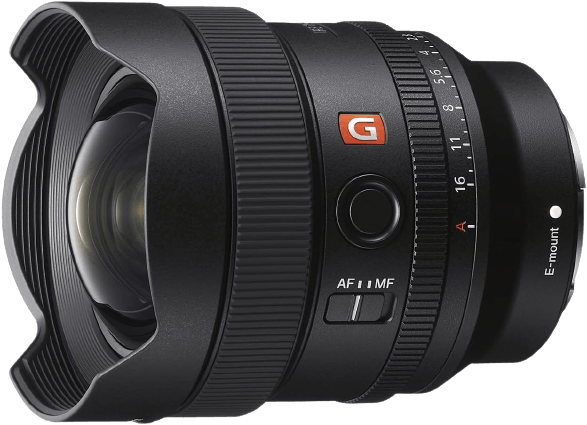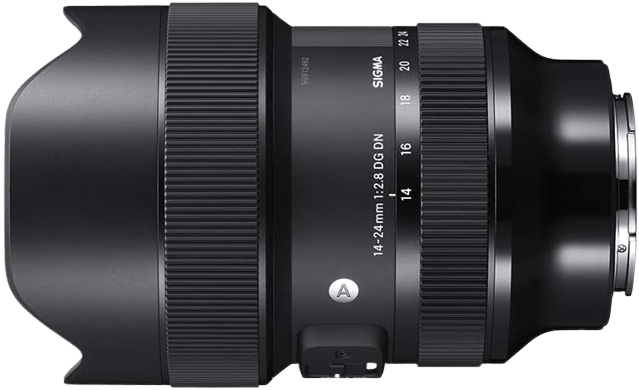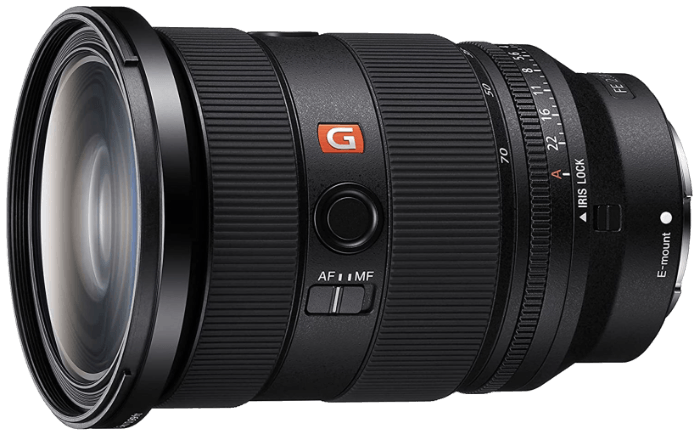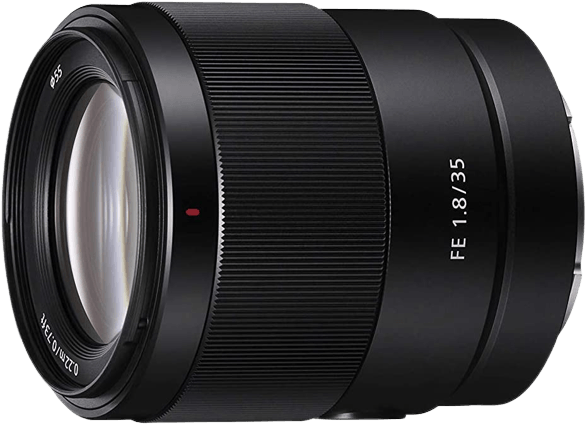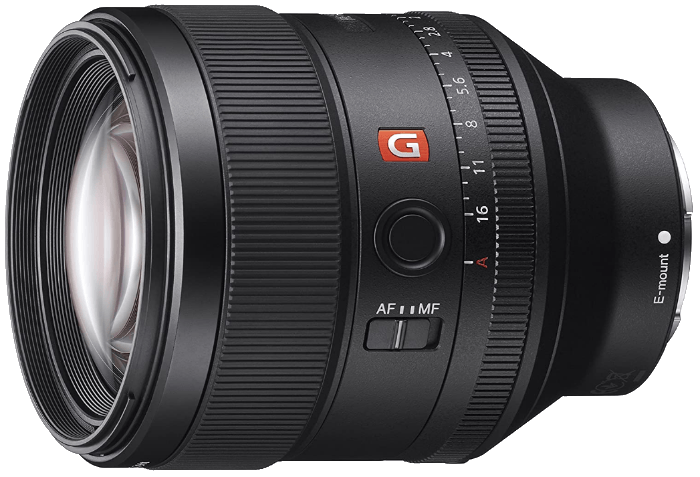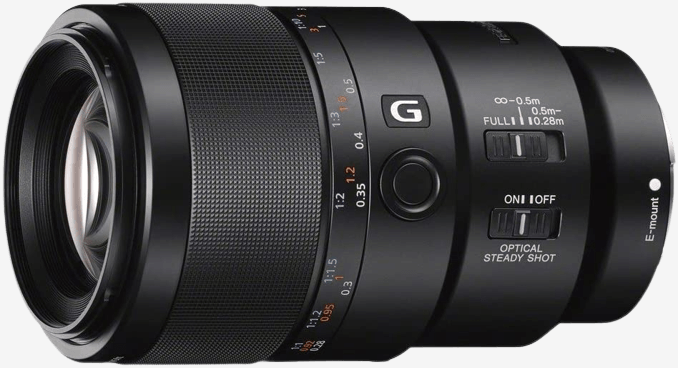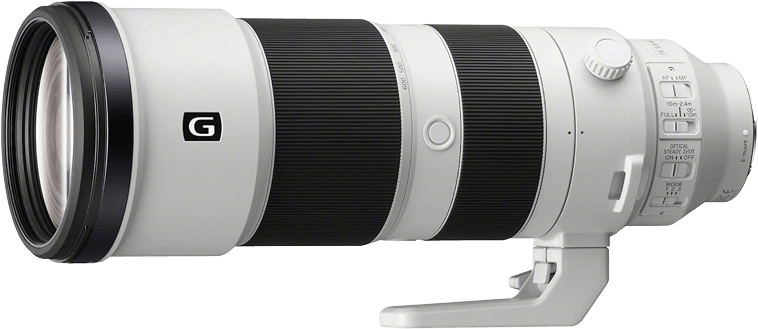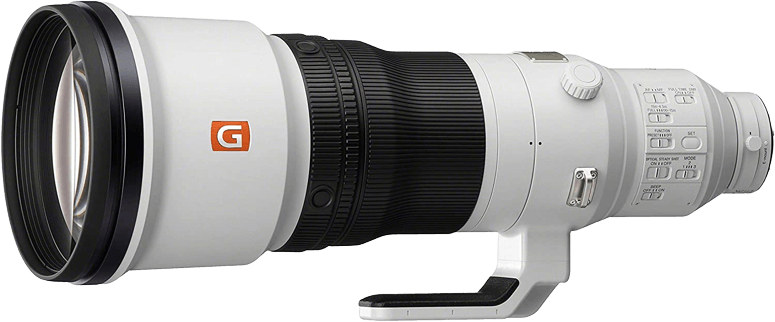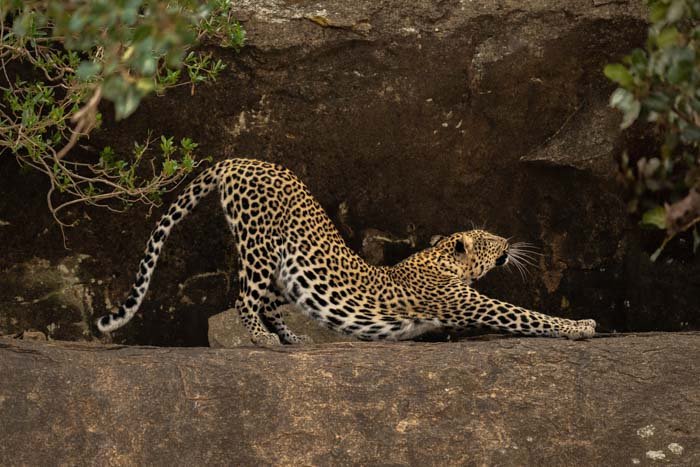We’ve also included lenses for every type of photography. But the Sony FE 70-200mm f/2.8 zoom lens is our favorite Sony a7 lens. The focal length is versatile. It lets you shoot portrait, sport, street, wildlife, and nature photography. And its autofocus (AF) and stabilization perform well. Read on for more info and more lenses. [Note: ExpertPhotography is supported by readers. Product links on ExpertPhotography are referral links. If you use one of these and buy something, we make a little bit of money. Need more info? See how it all works here].
The Best Sony a7III Lenses
Cameras in the Sony a7 series, like the Sony a7 III and Sony a7 IV, have the Sony E-mount. And because they are full frame cameras, they are compatible with Sony FE lenses. The Sony FE lens catalog is extensive. And there are plenty of high-quality lenses to choose from. You can also find an FE-mount lens for all types of photography. Your camera is indeed only as good as the lens you have with it. And thankfully, FE lenses are the perfect match for Sony’s high-performance mirrorless cameras. Here’s a quick rundown of the best Sony lenses. We’ll look at each lens in detail further down the page. And then below that, we have our recommendation for the best Sony teleconverter. Skip to the bottom to see that.
The Best Lenses for Sony a7 Series Cameras
Now we’ll dive deeply into each of the lenses on our list. We’ll take you through all the main specs and features. And we’ll let you know what each lens is best for. You’ll be able to find the best Sony lens for your Sony a7 III. The Sony FE 70-200mm f/2.8 GM zoom lens is an updated (and more expensive) version of its predecessor. It’s a lens I have. And I always find myself reaching for this lens first. I bought mine for three reasons:
The enhanced image quality The reduced weight New linear focus motors to speed up the autofocus system
You also get an aperture control ring. I prefer to change my aperture settings in-camera. But the control ring gives you a manual control option. There is slight pincushion distortion at the long end of the zoom. This isn’t ideal. But you only notice this distortion when you reach the full zoom limit. It’s also easy to remove in Lightroom. It’s easy to achieve a beautiful bokeh effect using this lens. That’s a fantastic effect for portrait, fashion, and product photography. You get misshapen “cat-eye” bokeh around the edge of the frame at f/2.8. But they round out if you stop down to f/4. It weighs 2.3 lb (1.0 kg). So it takes over from the Canon RF 70-200mm f/2.8 L as the market’s lightest f/2.8 24-70mm lens. The three-mode Optical SteadyShot (OSS) stabilization means handheld shooting is a breeze. I often use my 2.0x teleconverter to make mine into the equivalent of a 140-400mm lens. That gives me slightly more flexibility to frame the larger animals on safari. But it does mean losing a bit of sharpness and a couple of stops of light. There are several controls on the barrel:
A focus limiter An iris lock OSS control switches An AF-MF switch
The Direct Manual Focus (DMF) slider overrides the AF system whenever you need to switch to manual. It’s weather-sealed with an anti-smudge fluorine coating on the front element. The barrel is painted white to keep the temperature down. This is handy when you’re on safari in Africa! It has an internal zoom mechanism, which means it doesn’t get longer or shorter as you zoom in and out. It accepts 77mm screw-in filters. And a handy window in the lens hood lets you rotate a circular polarizing filter if you have one. The tripod foot doesn’t fit Arca-Swiss mounts. But that’s not too much of a problem at a medium focal range. And I like that you can remove it to save even more weight. This is a must-have lens for the Sony A7 III and a7 IV. A wide-angle zoom is a must-have lens in any photographer’s kit bag. And this FE 12-14mm f/4 G lens is one of the best for a Sony a7 III. The focal length range gives you plenty of shooting angles. And you can use it for all kinds of creative photography. The wide-angle field of view is perfect for real estate interiors. You can shoot properties in their best light. And you can make poky rooms appear light and spacious. That’s ideal if you’re going into real estate photography or shooting a property for Airbnb. This lens doesn’t have the fastest aperture, with a max of f/4. But it is constant throughout the zoom range. That means you don’t lose any stops as you extend the zoom. The DDSSM (Direct Drive Super Sonic Wave Motor) powers the autofocus. It’s fast and precise, which is exactly what you need when using high-resolution cameras. It’s quick to find focus. And it makes very little noise when moving. The optical quality is excellent overall. You might fight signs of distortion at the edges of your shots when at either extreme of the zoom range. But this is minimal and nothing out of the ordinary. The glass has a nano-coating that reduces glare. And the lens is dust and moisture-resistant. A 50mm prime lens is one of the most versatile pieces of glass you can shoot with. They give you a field of view similar to the human eye. And they can be used for many different types of photography. The Sony FE 50mm f/1.4 prime is the lens to go for. The 50mm focal length gives you plenty of shot options. You can shoot everything from landscape to portrait photography. While you can’t zoom with a prime lens, you have crisp and sharp image quality. You might experience some glare in direct light. But you don’t need to worry about distortion with this lens. This prime has a fast f/1.4 maximum aperture. That gives you excellent exposure control and better low-light performance. And when combined with the 11-blade aperture ring, you get stunning bokeh. You’ll have incredible portraits and product shots. The autofocus is powered by a Super Sonic Motor (SSM). It has a fast operation and is consistently accurate when finding focus. And it barely makes a noise. There’s a handy switch on the body of the lens that allows you to change from auto to manual focusing. You can switch between the two in a fraction of a second. And you don’t need to change your camera settings. It’s a fast and efficient solution. The Sony FE 14mm f/1.8 GM prime lens is a quality piece of glass. And it’s a fantastic wide-angle lens for a Sony A7 III or a7 IV. It doesn’t have the same level of versatility as the wide-angle zoom. But this prime gives you pristine image quality with every shot. The 14mm focal length is wide enough for property interiors. And you can capture impressive architecture shots and breathtaking landscapes. The fast f/1.4 aperture is a fantastic feature of this lens. It gives you plenty of natural light to play with. And you can achieve a shallow depth of field for lovely soft bokeh. The optical quality is of the highest order. You expect good image quality from prime lenses. But the optical engineering and Super ED glass remove the risk of glare and ghosting. So you get pristine images every time. The AF system is driven by two XD (Extreme Dynamic) Linear Motors. You can hear the motors when focusing. But it’s nothing alarming. It won’t disturb your subject or cause distractions. The benefit of the dual-motor system is super fast and responsive focusing. It’s a fair trade if you ask me. Sigma designed the 14-24mm f/2.8 Art wide-angle lens from the ground up for mirrorless cameras. It’s weather-sealed. And the build quality is excellent—even though it weighs only 1.8 lb (795 g). It has Sigma’s Nano Porous Coating and Super Multi-Layer Coating. They ensure good contrast and resistance to ghosting and flare. It also has these lens elements:
Three aspherical elements One fluorite low-dispersion element Five special low-dispersion elements
These guarantee sharp images at all focal lengths—even in the corners of the frame. There is some barrel distortion and vignetting wide open at 14-16mm. But this gets better at f/5.6. At the other end of the zoom range, there is pincushion distortion at f/2.8. But you can solve this by turning on the in-camera correction. Or you can also fix it in post-production. For instance, you can tick the Enable Profile Corrections check box in Lightroom. The two main problems with the lens are the lack of image stabilization and a filter thread. Again, though, solutions do exist. The Sony A7 III comes with in-body image stabilization (IBIS), which should do the trick on its own. There is also a rear holder for gel filters if you need them. Or you can buy n NiSi adapter for conventional filters. This is our top choice among the best Sigma lenses for the Sony a7 III. Overall, this wide-angle camera lens offers you stunning sharpness. And it’s a fraction of the price of the Sony G Master model. What’s the best reason to buy a Sony FE 24-70mm f/2.8 GM II zoom lens? Like all G Master lenses, Sony designed it with the highest image quality in mind. The lens offers phenomenal sharpness at all apertures and distances. This is due to the 20-element design. It has two extreme aspherical, two Extra-low Dispersion (ED), and two more Super ED elements. The latter is extremely-low dispersion glass. Color fringing and barrel distortion are minimal. Focus breathing while shooting video has been reduced even more. The Nano AR Coating II takes care of any ghosting and flare. And the fluorine coating protects against grease and water. The wide constant maximum aperture is handy for low-light conditions. It also gives you a smooth background bokeh. The 11-blade aperture diaphragm helps this. The four Extreme Dynamic (XD) Linear Motors provide fast and accurate autofocus. AF tracking while zooming is twice as good as on the old version. And continuous focus tracking can comfortably handle frame rates of 30 fps and 4K video at 120 fps. The lens also has the following:
An aperture control ring (with silent video operation) An adjustable torque zoom ring Two focus hold buttons A zoom lock
The hood also now has an access window. So it’s easier to rotate a circular polarizing filter. It’s not stabilized and weighs 1.5 lb (695 g). But that shows how well-built and weather-sealed it is (as it should be for the price!). There is a cheaper Sony f/4 version of this lens, but it’s not as good. There’s best, and there’s second best. A 35mm prime lens is handy to have in your camera backpack. And the Sony FE 35mm f/1.8 is the perfect option if you have a Sony a7 III. It’s compact and lightweight. And it gives you a wider angle than the 50mm prime. Many find it more convenient for street and travel photography. You’ll experience very little distortion or chromatic aberration when using this lens. The precision-engineered elements give you edge-to-edge sharpness. And the f/1.8 aperture gives you plenty of options with your exposure settings. The aperture uses 9-blades and has a circular finish. That gives you a smooth background blur and round bokeh shapes. The AF motor isn’t the most advanced we’ve seen in a Sony lens. But it still gives you quick and reliable focusing. And the affordable price is another thing we like about this Sony prime lens. The Sony FE 85mm f/1.4 GM prime lens is an excellent portrait lens. It’s well-built and weather-sealed for outdoor shooting. Its three Extra-low Dispersion (ED) elements ensure very sharp images across the frame. These are the “sweet spots” of maximum sharpness:
f/2.8 in the center f/5.6 in mid-frame f/8 in the corners
The 85mm focal length is ideal for portrait photography. It lets the photographer stand a good distance away from the model. And it flattens the perspective slightly. The wide maximum aperture lets you separate the subject from the background. And this makes it perfect for working in low light. There’s minimal chromatic aberration. And the nano-structure AR coating eliminates flare. It has an 11-blade diaphragm and high-precision eXtreme Aspherical element. They provide smooth, circular bokeh highlights. (Sony built a new mold-making machine. That way, the lens wouldn’t produce ugly ones shaped like onion rings!) It’s relatively heavy at 1.8 lb (815 g). There’s no image stabilization. And the autofocus is a bit too slow for moving subjects. But you can still shoot handheld. And the Sony a7 III’s IBIS system can handle camera shake. The lens just wasn’t meant for action photography. There’s also a touch of pincushion distortion. But the camera should correct that internally. Portrait lenses don’t come much better than this. And its features make it a good lens for fashion, product, and food photography. Again, there’s a cheaper f/1.8 version available. But this list contains the best lenses for Sony a7 III, not the cheapest! The Sony FE 90mm f/2.8 G is the perfect macro lens for your Sony A7 III or IV. It’s a specialist lens for macro photography. It has outstanding optical quality. And it enhances the image quality when using high-resolution cameras. The maximum magnification ratio is 1.0x. And when combined with the 90mm focal length, you get the perfect macro image. The glass quality is exceptional. It combines advanced spherical and Extra-low Dispersion (ED) elements with an anti-glare coating. The result is ultra-fine image quality. The aperture has a nine-blade circular diaphragm. That helps you achieve the soft bokeh effect. And you get lovely round bokeh shapes. The SSM focus system is perfect for macro photography. It isn’t quite quick enough for fast-moving subjects. But it’s reliable, responsive, and quiet. It’s the perfect lens for insect photography. But it can also be used for product and food photography with great effect. The Sony FE 200-600mm f/5.6-6.3 telephoto zoom lens is “the one that got away.” I wanted a long telephoto lens when I bought my first two Sony mirrorless cameras. And I liked the versatile zoom range. But I couldn’t get past the (relatively) narrow maximum aperture. But this is a good lens if you’re not obsessed with smooth bokeh and don’t often shoot in low-light conditions. It’s not part of the G Master series, yet it has a useful focal range. And the internal zoom mechanism makes it easy to balance on a gimbal tripod head. It’s sharper at 400mm than Sony’s 100-400mm lens. And you can always bolt on a 1.4x or 2.0x teleconverter for extra reach. Plus, the “short throw” from 200 to 600mm makes it a very practical lens for wildlife photographers out in the field. It’s not even that big or heavy. It’s just over a foot (31.8 cm) in length and weighs 4.7 lb (2.1 kg). It’s a lot lighter than the next two lenses! I bought my Sony FE 400mm f/2.8 telephoto lens after watching an unboxing video by Tin Man Lee. At one point, the wildlife photographer showed how light the lens was by picking it up with his finger and thumb! It is a very expensive prime lens. But I loved the combination of the fast maximum aperture and lightweight build. It’s the lightest f/2.8 400mm lens on the market. It weighs only 6.4 lb (2.9 kg). Usually, there’s a trade-off between speed and weight. But not this time. That means you can happily shoot handheld, even with a 1.4x teleconverter. I’ve done this myself in Antarctica. And 560mm was almost the perfect focal length to take pictures of penguins in a snowstorm! The lens is exceptionally sharp across the frame. And the autofocus performance is lighting-fast. That makes it ideal for wildlife and sports photography. Being able to take pictures at f/2.8 is also handy in low-light conditions. Or it’s great if you want to create nice, creamy bokeh in the background. This makes it a good lens for headshots and close-up portraits. The Sony FE 85mm f/1.4 GM lens (previously discussed) is better suited to full-body portraits. But out of all of the best prime lenses for the Sony a7 III, this is likely the best one. My Sony FE 600mm f/4 GM telephoto lens is not quite as long as my old 800mm Nikon. But it’s probably the best telephoto lens for wildlife photographers. I can either use it on its own or pair it with my 1.4x teleconverter to get the equivalent of an 840mm lens! That flexibility is ideal, as you can’t zoom in and out with a prime lens to help with your framing. Everything I said about the 400mm lens is true for the 600mm. That’s apart from the maximum aperture, which is a stop slower at f/4. It offers excellent sharpness and rapid autofocus. And it’s still a lightweight lens, even at 6.7 lb (3.0 kg). So it’s still possible to shoot handheld. But it does feel heavier over time. So I’d advise doing anything you can to save weight. That might mean shooting without a teleconverter. Or you might take your Sony a7 III battery grip off to give you a few more minutes of pain-free operation!
Best Teleconverters for Sony A7 III Lenses
There are two general types of teleconverters—1.4x and 2.0x. The first multiplies the focal length of your lens by 1.4 at the expense of a stop of light. The second doubles the focal length but “costs” two stops. Buying the wrong teleconverter might mean you can’t use it with your lens. Or it won’t work with the autofocus (AF) system due to compatibility issues. It might also mean a deterioration in image quality and focusing speed. The Sony E-mount 14TC 1.4x teleconverter gives you even more flexibility with your E-mount lenses. That’s especially true for lenses with a long focal range. I’m a wildlife photographer, and I used to take two-thirds of my shots with a Nikon 800mm lens. Sony doesn’t (currently) make anything that long. That meant I had to buy the Sony FE 600mm f/4 GM OSS lens and attach my 1.4x teleconverter if I wanted more reach. Three things to note:
You lose a stop of light. The images are a little softer. You get increased vignetting in the corners of your images.
But it’s a great option. These are only minor issues. And they are a small price to pay for the extra reach. It’s only 20 mm long and weighs 4.4 oz (126 g). And it’s compatible with the following Sony lenses for the Sony a7 III:
FE 400mm f/2.8 GM OSS FE 600mm f/4 GM OSS FE 70-200mm f/2.8 GM OSS FE 100-400mm f/4.5-5.6 GM OSS FE 200-600mm f/5.6-6.3 G OSS
Conclusion: The Best Sony a7III Lenses
I often go on safari with two lenses. I bring my Sony FE 24-70mm f/2.8 GM lens on one camera and my Sony FE 600mm f/4 GM OSS lens on the other. So I’m ready for anything! You might need a different focal length for your Sony A7 III if you work in a different genre. Portrait photographers might fall in love with the Sony FE 85mm f/1.4 GM portrait lens. Landscape photographers might prefer the Sony FE 12-24mm f/2.8 GM wide-angle zoom lens. It has a better viewing angle. But the Sony FE 70-200mm f/2.8 GM zoom lens is our top choice. The versatile focal length range gives you excellent shooting options. It has fast and smooth AF. And its optical stabilization is a feature all photographers will appreciate.
